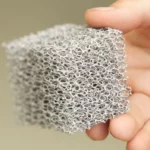Carbon nanotubes (CNTs) are tiny, cylindrical structures made up of carbon atoms arranged uniquely, giving them remarkable properties. Imagine a sheet of one-atom-thick carbon, called graphene, rolled up into a tube; that’s essentially what carbon nanotubes are. Despite their minuscule size, with diameters measured in nanometers (billionths of a meter), carbon nanotubes are incredibly strong and much stronger than steel. Yet, they have only a fraction of the weight.
Strength and Flexibility of Carbon Nanotubes
One of the most notable features of carbon nanotubes is their incredible strength. They are among the most robust and rigid materials yet discovered regarding tensile strength (the resistance to being pulled apart) and elasticity (the ability to stretch without breaking). This makes them ideal for creating strong, lightweight materials that could revolutionize the construction, automotive, and aerospace industries.
Electrical Conductivity
Carbon nanotubes are also exceptional conductors of electricity, much better than copper, which is widely used for electrical wiring. This property opens up potential applications in electronics and technology, particularly in developing faster, more efficient circuits and components for devices like computers, smartphones, and sensors.
Thermal Conductivity
In addition to their electrical prowess, carbon nanotubes have excellent thermal conductivity, meaning they can transfer heat very efficiently. This makes them useful in materials and devices designed to manage heat, such as computer chips and other electronic devices where overheating can be problematic.
Top two Manufacturer of Carbon Nanotubes
Applications in Various Fields of Carbon Nanotubes
Electronics and Computing
In electronics, carbon nanotubes have the potential to significantly advance the development of smaller, faster, and more efficient devices. They could be used to create ultra-small transistors, the building blocks of electronic devices, making computers and smartphones far more potent than today’s models.
Materials Science
Carbon nanotubes can be mixed with different materials, like plastics or metals, to create composites with enhanced properties. For example, adding CNTs to plastic can make it stronger and more electrically conductive. It is valuable for creating durable, lightweight materials for cars, planes, sports equipment, and bulletproof vests
Energy Storage
Carbon nanotubes promise to improve the performance of batteries and supercapacitors in the energy field. Their high surface area and conductivity can lead to energy storage devices that charge faster, last longer, and hold more power, which is crucial for the future of renewable energy systems.







